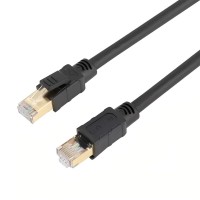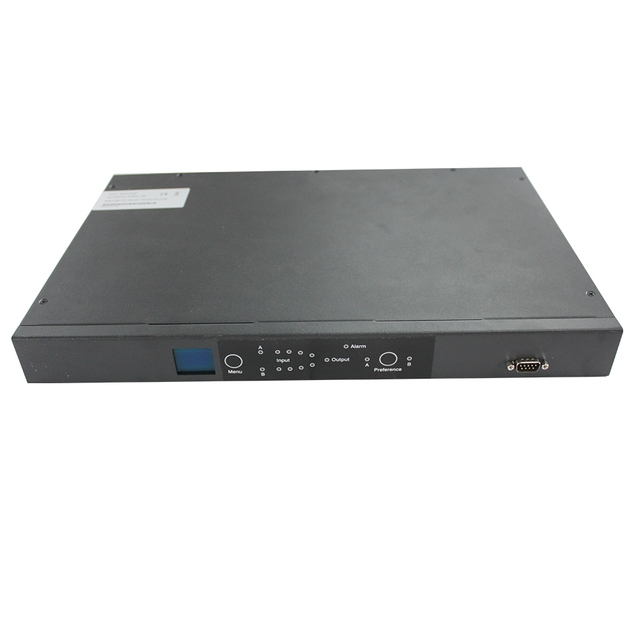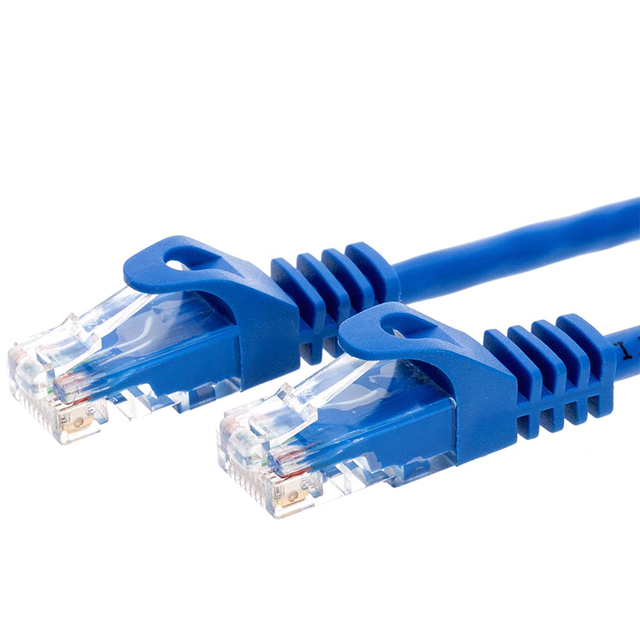
Introduction
Confused about the difference between a power cord and a PDU? You’re not alone! While both are used for power, their functions differ. In this article, we’ll explain their key differences and how each works. Whether setting up a home office or managing a data center, knowing how to use them is important. We’ll break down their functions, advantages, and when to use each. Keep reading to find out what suits you best!
Understanding Power Distribution and Power Cords
What is a Power Cord?
Definition of a Power Cord
A power cord is a simple cable. It connects electrical devices to a power source, supplying the necessary electricity.
Common Types of Power Cords
IEC Power Cords (C13, C14, C19, C20): Used for IT equipment, computers, and servers.
NEMA Power Cords (5-15P, 5-20P): Common in homes and offices for everyday devices.
Hospital-Grade Power Cords: Designed for medical equipment, ensuring safety and reliability.
Extension Cords and Splitters: Provide extra reach and more outlets for multiple devices.
Uses of Power Cords
Power cords are found everywhere. They power devices in homes, offices, and even small appliances like TVs, computers, and kitchen gadgets.
What is a PDU?
Definition of a PDU
A Power Distribution Unit is used to manage the distribution of power. It serves multiple devices in settings like data centers and server rooms.
Types of PDUs
Basic PDUs: Simple models, offering standard power distribution.
Metered PDUs: These provide power usage monitoring for each outlet.
Switched PDUs: Allow remote switching of outlets.
Smart PDUs (Intelligent PDUs): Offer advanced features like remote monitoring and load balancing.
Rackmount PDUs: Designed for server racks, saving space and ensuring organized power distribution.
Uses of PDUs
PDUs are essential in environments with multiple devices, like data centers. They help prevent overloads, ensure reliable power, and offer control over distribution.
Power Cord vs PDU: Key Differences
Functionality
A power cord simply delivers power to a single device. A PDU, on the other hand, distributes power to many devices and often comes with added features like monitoring, load balancing, and surge protection, making it ideal for larger setups.
Design and Construction
Power cords are just cables. PDUs are more complex devices, often housed in metal enclosures for better safety and durability.
Application Scope
Power cords are typical in homes, offices, and for smaller devices.
PDUs are needed in large-scale operations like server rooms, where multiple devices require organized power.
Cost and Installation
Power cords are affordable and easy to set up. PDUs are more expensive and may need professional installation, especially for advanced models.


Power Cord vs PDU: Pros and Cons
When deciding between a power cord and a PDU, it's important to weigh the pros and cons of each. Let’s break down their strengths and limitations.
Pros of Power Cords
Affordable and Easy to Use : Power cords are cost-effective. Simply plug them in and you’re ready to go. No need for complex installation.
Widely Available : Power cords are easy to find. Whether you're at home, the office, or in retail spaces, they’re always nearby.
Versatile : They work with many devices, from household appliances to office electronics, and fit most outlets.
Cons of Power Cords
Limited Power Distribution : Power cords can only support one device at a time. They’re not designed for larger setups.
Lacks Monitoring Features : Unlike PDUs, power cords don’t offer any monitoring tools or features to track power use or performance.
Pros of PDUs
Advanced Features for Large Systems : PDUs come with features like load balancing and surge protection. They’re built for large systems that need power management.
Multiple Devices : PDUs can power several devices at once. This makes them perfect for server rooms and data centers where multiple devices need electricity.
Cons of PDUs
Higher Cost : PDUs are pricier than power cords. Their advanced features come at a cost, including installation expenses.
Complex Setup : Setting up a PDU can be more complex. You may need professional help to install it properly, especially for larger systems.
How to Choose Between a Power Cord and a PDU
1. Consider Your Power Needs
Small Devices: Power cords are perfect for simple setups. Think of home appliances or personal devices.
Large-Scale Systems: For data centers or server rooms, a PDU is essential. It can handle multiple devices and manage power more efficiently.
If you're working with a few small devices, a power cord will do. But, for larger setups with high power requirements, PDUs provide a more robust solution.
2. Budget Considerations
Power Cord: Low-cost, widely available.
PDU: Higher cost, but comes with advanced features like monitoring and surge protection.
For large-scale systems or environments that require high reliability, investing in a PDU is worth it.
3. Space Constraints
Power Cord: Takes up minimal space. Easy to use in home offices or small workspaces.
PDU: May need more room, especially rack-mounted models. Ideal for server racks and environments that need organized power distribution.
In compact workspaces, a power cord is convenient. But for more organized setups, a PDU helps maximize space and power management.
4. Scalability and Future Needs
If you plan to grow your setup, PDUs offer the scalability you’ll need.
5. Security and Monitoring
Power Cord: No advanced features for monitoring or security.
PDU: Many PDUs offer remote monitoring and security features, making them essential for sensitive environments.
In high-security areas or data centers, a PDU provides the control and monitoring required for safety and efficiency.
Applications: When to Use a Power Cord and When to Use a PDU
When to Use a Power Cord
A power cord is ideal for smaller, less complex setups. You’ll find them in many everyday devices. Here’s when to use one:
Simple Home Appliances: Devices like lamps, kitchen gadgets, and small electronics.
Personal Devices: Laptops, phones, or any device that doesn’t require a heavy power load.
Small Office Equipment: Printers, monitors, or desktop computers in a small work environment.
Short-Term or Portable Power Needs: Temporary setups where quick, mobile power is required.
Power cords are easy to use and affordable. They work well in smaller-scale applications.
When to Use a PDU
In larger, more complex systems, a PDU is often necessary. Here’s when a PDU shines:
Data Centers and Server Rooms: PDUs manage power for multiple servers and high-density equipment.
Large IT Infrastructures: Use PDUs in setups with heavy power demands, like network switches or servers.
Remote Monitoring Needs: PDUs allow remote management of power usage and help monitor energy efficiency.
High Security Environments: PDUs have built-in features like lock-out mechanisms to prevent unauthorized access.
A PDU provides more control and is essential for large-scale systems.
Power Cord and PDU: Common Misconceptions
Power Cord vs. PDU in Terms of Power Handling
A common myth is that PDUs are simply expensive power cords. Many people assume a PDU does the same thing as a power cord—just more costly. In reality, PDUs are far more efficient for large-scale systems, especially in data centers or server rooms.
A power cord simply connects one device to a power source, providing basic power flow. In contrast, a PDU distributes power to multiple devices at once. It can handle higher power loads and offers surge protection, load balancing, and monitoring.
Power cords aren't designed for power distribution in complex setups. PDUs are built for that. PDUs also allow for remote monitoring, making them essential for managing large systems.
Do PDUs Replace Power Cords?
Another common misconception is that PDUs replace power cords. However, this is not the case. Power cords and PDUs work together, complementing each other.
A PDU distributes power, while power cords connect devices to the PDU or power source. You still need power cords to link devices to the PDU, especially in server racks or large networks. The PDU provides multiple outlets, but each device still requires a power cord to plug in.
While PDUs can manage power flow, they can’t function without power cords. It’s a partnership, not a replacement.
Conclusion
In this article, we explored the differences between a power cord and a PDU. Power cords are simple and ideal for personal devices or small setups. PDUs, on the other hand, are designed for larger environments, like data centers. When choosing between them, consider your setup size and power needs. For smaller devices, a power cord works best. For larger, complex systems, a PDU is the right choice.
FAQS
Q: Can I use a PDU with my home setup?
A: Yes, you can use a PDU in smaller environments like home offices, but it's more beneficial for larger setups that need multiple devices powered. PDUs offer features like remote monitoring and surge protection, which are useful in more complex systems.
Q: What is the cost difference between a power cord and a PDU?
A: Power cords are inexpensive, usually under $10, while PDUs can cost anywhere from $50 to $500+, depending on features. Investing in a PDU makes sense for large-scale systems or data centers where remote monitoring and surge protection are needed.
Q: Can I plug multiple power cords into a PDU?
A: Yes, PDUs are designed to distribute power to multiple devices simultaneously. Unlike power cords, which typically only power one device, a PDU can manage several at once.
Q: What’s the difference between a basic PDU and a smart PDU?
A: Basic PDUs provide simple power distribution, while smart PDUs allow remote monitoring, energy usage tracking, and individual outlet control, offering more advanced features for large setups.
Q: How do I choose between a smart PDU and a standard PDU?
A: Choose a smart PDU for remote management, energy monitoring, and large-scale environments. A standard PDU is suitable for simpler, smaller setups with no need for advanced features.


















